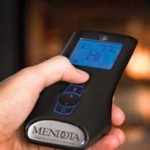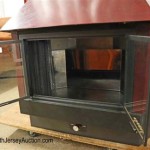Marble Fireplace Surround Cleaner: A Comprehensive Guide
Marble fireplace surrounds offer a timeless elegance and contribute significantly to the aesthetic appeal of a living space. However, the inherent porous nature of marble makes it susceptible to stains, soot accumulation, and etching from acidic substances. Regular and proper cleaning is crucial to maintain its beauty and integrity. This article provides a detailed guide on how to clean a marble fireplace surround, focusing on appropriate cleaning agents, techniques, and preventative measures.
Understanding Marble and Its Vulnerabilities
Marble is a metamorphic rock composed primarily of calcite or dolomite. Its porous structure allows liquids and particulate matter to penetrate the surface, leading to staining. Additionally, marble is sensitive to acidic solutions. Acids, even in diluted forms, can react with the calcium carbonate in marble, causing etching – a dulling or roughening of the surface. Understanding these vulnerabilities is paramount in selecting the right cleaning methods and products.
The environment around a fireplace further exacerbates these issues. Soot and ash from burning wood contain acidic components and can easily settle on the surrounding marble. Creosote, a byproduct of wood combustion, can also contribute to stubborn stains. Therefore, a carefully chosen cleaning regimen is necessary to counteract these potential problems effectively.
Essential Cleaning Tools and Supplies
Before starting the cleaning process, gathering the necessary tools and supplies will ensure a smooth and efficient experience. These include:
Soft cloths or a microfiber cloth:
Essential for wiping surfaces without scratching. Microfiber cloths are particularly effective at trapping dust and dirt.Soft-bristled brush:
Useful for gently scrubbing textured areas or removing stubborn soot. Avoid stiff brushes that could scratch the marble.Two buckets:
One for clean water and another for the cleaning solution.pH-neutral marble cleaner:
Crucial for avoiding etching and discoloration. Commercial marble cleaners are readily available, but it's essential to verify their pH neutrality.Baking soda:
A mild abrasive and alkaline agent useful for removing stains.Distilled water:
Preferred over tap water, especially in areas with hard water, as it minimizes the risk of mineral deposits.Hydrogen peroxide (3% solution):
Can be used for removing certain types of stains, but only with caution and proper dilution.Plastic wrap or cling film:
To cover poultices applied to stained areas.Gloves:
To protect hands from cleaning solutions.Eye protection:
To prevent splashes of cleaning solutions from entering the eyes.
Step-by-Step Cleaning Procedure
The cleaning process should be approached methodically to ensure thorough cleaning and minimize the risk of damage. The following steps outline a comprehensive cleaning procedure for a marble fireplace surround:
Preparation:
Begin by removing any loose debris, such as ash or soot, from the surface of the marble surround. Use a soft brush or a vacuum cleaner with a brush attachment to accomplish this. Cover the hearth and surrounding floor area with a drop cloth to protect them from spills.Dusting:
Thoroughly dust the entire surface of the marble with a soft cloth or microfiber cloth. This removes surface dirt and prevents it from being ground into the marble during the cleaning process.Cleaning with pH-Neutral Cleaner:
Dilute the pH-neutral marble cleaner according to the manufacturer's instructions. Dip a clean, soft cloth into the solution and wring out the excess water. Gently wipe the entire marble surface, working in small sections. Avoid allowing the cleaner to pool on the surface.Rinsing:
After cleaning, thoroughly rinse the marble surface with clean, distilled water. Use a separate clean cloth dampened with water to remove any remaining cleaner residue. This is essential to prevent a dull film from forming on the marble.Drying:
Dry the marble surface completely with a clean, dry cloth. This prevents water spots and helps to maintain the marble's shine.Addressing Stains (If Necessary):
If stains are present, additional steps may be required. The method used will depend on the type of stain.
Addressing Specific Types of Stains
Different types of stains require different approaches. Identification of the stain is crucial for selecting the correct cleaning method.
Oil-Based Stains:
These stains, such as grease or wax, often appear darker than the surrounding marble. A poultice can be used to draw out the stain. Mix baking soda with distilled water to form a paste. Apply the paste to the stain, covering it completely. Cover the poultice with plastic wrap and let it sit for 24-48 hours. The baking soda will absorb the oil. Remove the plastic wrap and allow the poultice to dry completely. Scrape off the dried poultice with a plastic scraper, then rinse the area with distilled water and dry with a clean cloth.Water-Based Stains:
These stains, such as coffee or tea, may leave a light ring or discoloration. A poultice similar to the one used for oil-based stains can be effective. Alternatively, a solution of hydrogen peroxide (3% solution) diluted with distilled water (1 part hydrogen peroxide to 5 parts water) can be applied to the stain. Apply the solution with a clean cloth, let it sit for a few minutes, and then blot it dry. Rinse the area with distilled water and dry with a clean cloth. Test the solution in an inconspicuous area first to ensure it doesn't damage the marble.Soot and Smoke Stains:
These stains are typically caused by the fireplace itself. A paste of baking soda and distilled water can be used, similar to the oil-based stain removal. Gently scrub the stained area with a soft-bristled brush, then rinse thoroughly with distilled water and dry with a clean cloth. For heavier soot stains, a commercial soot remover specifically designed for marble may be necessary, but always test it in an inconspicuous area first.Rust Stains:
Rust stains can be particularly difficult to remove. Avoid using harsh chemicals containing hydrochloric acid or other strong acids, as these will damage the marble. A commercial rust remover specifically formulated for marble may be required. Follow the manufacturer's instructions carefully and test in an inconspicuous area first. In some cases, professional marble restoration may be necessary to completely remove rust stains.Preventative Measures to Protect Marble
Prevention is always better than cure. Taking preventative measures can significantly reduce the need for extensive cleaning and minimize the risk of damage to the marble fireplace surround. These measures include:
Regular Dusting:
Dusting the marble surface regularly, at least once a week, will prevent the accumulation of dirt and soot, making cleaning easier and reducing the likelihood of stains.Immediate Spill Cleanup:
Clean up any spills immediately. The longer a spill sits on the marble surface, the greater the chance of staining. Blot the spill with a clean cloth, avoiding rubbing, and then clean the area with a pH-neutral marble cleaner.Using a Fireplace Screen:
A fireplace screen will help to prevent sparks and embers from landing on the marble surround, reducing the risk of soot and burn marks.Proper Ventilation:
Ensure proper ventilation in the room when using the fireplace. This will help to reduce the amount of soot and creosote that accumulates on the marble surface.Professional Sealing:
Applying a sealant specifically designed for marble can help to protect it from stains and etching. Sealants penetrate the pores of the marble and create a barrier against liquids and dirt. Re-sealing should be done periodically as recommended by the sealant manufacturer. Consult with a professional marble restoration company for advice on the best sealant for your specific type of marble.Avoiding Acidic Cleaners:
Never use acidic cleaners, such as vinegar, lemon juice, or ammonia-based cleaners, on marble. These cleaners will etch the surface and cause permanent damage.
By understanding the vulnerabilities of marble, employing appropriate cleaning techniques, and implementing preventative measures, the beauty and longevity of a marble fireplace surround can be preserved for years to come. Regular maintenance and careful attention to detail are the keys to maintaining its elegant appearance.

How To Re Clean Marble Fireplaces The Fireplace Studio

How To Clean Marble Fireplaces Surrounds Direct

How To Clean Marble Fireplaces Surrounds Direct

Do You Know The Right Way To Clean Marble Fireplace Surround Thoroughly Youfine Sculpture

How To Clean Your Fireplace Surrounds Rotherham Centre

How To Clean Marble Fireplaces Surrounds Direct

How To Clean And Maintain A Marble Fireplace For Years Of Eoyment Amazing Home Decor

How To Clean A Granite Or Marble Fireplace Paramount Stone

How To Maintain Your Granite Or Marble Hearth Omega Stone

Marble Fire Surround Cleaning Maintaining The Porous Stone
Related Posts








